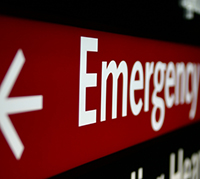

Blog

Ramping-gate – part 2
Thursday March 11, 2021
ED docs in survival mode in “war zone”
In recent months, the hours that patients have spent waiting within ambulances, unable to get into public hospital emergency departments for specialised clinical care, have spiralled out of control. In January, ambulances spent 4,111 hours ramped outside EDs – a 411 per cent increase compared to January 2017.
In a bid to find solutions and bring principal parties together, the AMA (WA) called an access to emergency hospital care crisis meeting just before Christmas. In attendance were Health Department officials including Director-General Dr David Russell-Weisz, the heads of almost every ED in Perth, and St John Ambulance (SJA) senior executives.
Dr Russell-Weisz acknowledged that ambulance ramping had worsened over the past few months, attributing the increase to a raft of factors including:
- a 2.6 per cent increase in mental health attendances*
- 133 NDIS patients awaiting discharge**
- a 2.2 per cent increase in ED attendances*
- a 5.2 per cent reduction in admissions from ED*
- a 7.1 per cent increase in elective surgery.*
While agreeing there was no quick fix, the DG along with East Metropolitan Health Service executives Liz MacLeod and Dr Lesley Bennett discussed some of the strategies that had been embraced to combat increased ramping. These included
- a Rapid Assessment Team (RAT) model for pre-triage early assessment at Royal Perth Hospital
- assessing ramp patients in triage corridors and the airlock to determine reallocation to Resus at Sir Charles Gairdner Hospital
- a plan to launch new ED virtual real-time triage to paramedic crews on scene, prior to transfer to ED/ramp at the Fiona Stanley-Fremantle Hospital Group
- escalating NDIS case reviews through the Critical Services Issues Response (CSIR) pathway, and
- 116 ED and mental health beds in development across WA Health over 2020-21, among a host of other initiatives.
Dr Russell-Weisz assured attendees at the meeting that this was not an argument about “the front door”. “We are one with you to fix this,” he said. AMA (WA) President Dr Andrew Miller commended the DG for engaging with clinicians but pointed out that many of WA Health’s initiatives would take years to be opened up to patients.
“We don’t doubt that the Department is trying – what we can see is that they are not succeeding,” Dr Miller said.
“All the low-hanging fruit is long gone – we have had efficiency drive upon drive, program upon program, no doubt improving things to a degree, but we simply don’t fund the health service we need to meet growing demand.”
The AMA (WA) has long maintained that capacity is key. Former president and current AMA (WA) Councillor, Associate Professor David Mountain reiterated this saying the central health system was running at more than 100 per cent occupancy routinely.
“When you’re running that close to the edge, an extra percent in presentations spills out everywhere,” Dr Mountain said.
As the discussion moved on and troubling references to clinical incidents, moral injury and delays were shared, Dr Miller was categorical in upholding the cause of workplace safety.
“Doctors, nurses and paramedics trying to keep emergency care together will not be able to do it for much longer.
“We hear many are leaving or planning to change career due to burnout as they count down the clock each shift,” he said.
Dr David McCoubrie, AMA (WA) Vice President and Head of Department at RPH’s ED, extended an open invitation to anyone to come and see first-hand how his team was functioning.
“Staff are burnt out and exhausted. We are managing crises at work every day with almost disaster-level resource management,” Dr McCoubrie said.
Head of Fiona Stanley Hospital’s ED, Dr Vanessa Clayden agreed.
“You cannot underestimate the human impact of this on patients and staff…the clinicians fret extraordinarily over patients.”
Dr Peter Allely, WA Faculty Chair of the Australasian College for Emergency Medicine and head of department at SCGH’s ED, perhaps best captured the sentiment around the table when he said ED doctors were in “survival mode”.
“We are at significant risk of losing a whole generation of ED physicians,” Dr Allely said. The AMA (WA) thanks all the clinicians and executives who attended the meeting for their insights.
The Association will continue to monitor the situation and work positively with the Department of Health and SJA to drive solutions to the ongoing crisis.
* Based on figures for July–November 2019 and 2020.
** Based on figures from 1–21 December 2020.

